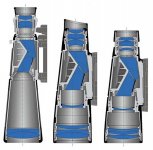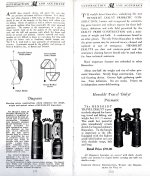My 2 cents.Have you actually tried anything with a 6 mm or 7 mm exit pupil? There are many reports here on BF where first users experienced a 7x42 as a revelation.
Background: I am a believer in the creed of 7x42 (or 7x35), a true devotee. No other binocular has given me the same viewing amazement and pleasure as a 7x42 Zeiss FL.
However, while I've run marathons, climbed glaciers and hauled a fully loaded bicycle across countries... I do indeed notice the difference between a 750 g binocular and a 580 g binocular around my neck. Hence, believe it or not, I've sold the two units of the Zeiss FL 7x42 I've owned (as well as other very nice 7x42 like the Ultravid HD) and my most used binoculars are an 8x32 at 580 g (which I wish were 530 g honestly).
That is to say, I think there is indeed a number of people for whom weight and bulk (or the perception thereof) are key for an everyday binocular; I've enjoyed armchair astro sessions with a 1,5 kg Fujinon, but that's a completely different story. For the most of the birding I do, watching birds involves walking for hours carrying something on my neck (I've tried using a harness, but I find it has its own problems, like the fact that I always carry a backpack and they don't work as well with it), and this is why I prefer something around 500 g than something around 750 g. Yes I do feel the difference those 250 g make, sorely. Actually, I much prefer carrying a 435 g Monarch 7 to my 580 g ELSV, but I find the viewing comfort is much greater in the ELSV and the performance difference is noticeable. Do I prefer the view through the 7x42 FL to the 8x32 ELSV? Yes, on many aspects I do, but not enough to overcome the size/weight difference (actually, I paid less for both FL I've had than for my ELSV, so price is not a consideration). My ideal binoculars are the Leica 7x35 Retrovid with a 5 mm EP, the classical 7x depth of field and a lovely view at 570 g (even less than my 8x32 ELSV), but then the eyecups on the Retrovid are so narrow that they ruin the experience... and back to the starting point.
I do think weight is a very important aspect of an everyday ("walking") pair of binoculars (not if you're in a hide or stationary position). In my particular case, if this is of any help to gain insights and enrich discussion, the balance of performance/weight has led me to the 580 g of the 8x32 EL, but the 450 g of the Opticron Traveller are also quite impressive and attractive. I know it might sound stupid or weird, but I just don't "see" the 8x42 binocular as an everyday device for birding (except for maybe something like the MHG), and I know millions do. My first good binocular was a 8x42 Zeiss Conquest HD... which I ended up selling to buy a 8x32 when I faced the truth: many days I left the 795 g of the Conquest at home and grabbed my partner 8x32 Kowa. On 95 % of the time I go birding, the 8x32 ELSV are more than enough, even during twilight hours (maybe my preference for a 8x32 also has to do with the fact that I live in the Mediterranean)... and on that other 5 % of the time, I'm better off with something more "suited" than a 8x42, like a 7x50 (I enjoy a lovely 740 g Vixen Ultima porro that gives me that "7x experience to an incredible degree), or else 8x56, 10x50, etc. So, in my case, a 750 g 8x42 is just not an option as an everyday binocular (same can be said about the 7x42), and I know I'm missing great things like the SLC... or even the mighty NL.
So there you go.
(I think I've never actually stopped to think the compromises in terms of build quality, materials and -probably- durability the weight reduction involves, I'll look for the mentioned thread in CN, sounds really interesting, thanks for bringing that up!)












